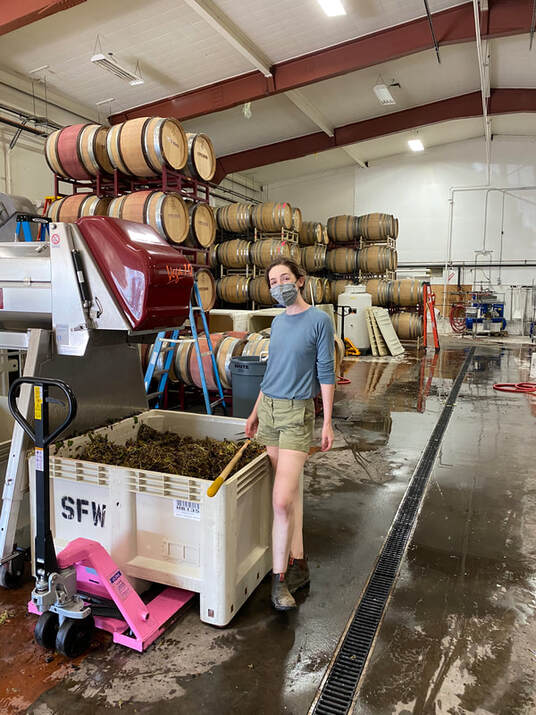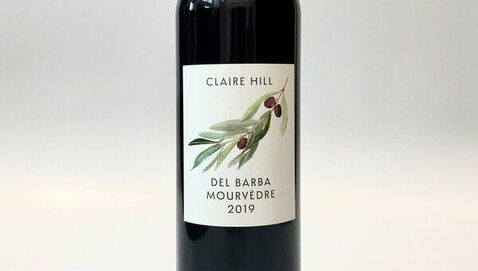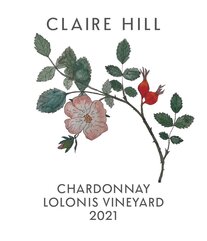Claire Hill Wines
Viticultural Areas: Mendocino, Santa Cruz Mountains, West Sonoma County, Sierra Foothills, Contra Costa
Varieties: Zinfandel, Mourvèdre, Chardonnay
Viticulture: Organic
Terroir: Gravel, Sand, Granite, Loam, Clay
Varieties: Zinfandel, Mourvèdre, Chardonnay
Viticulture: Organic
Terroir: Gravel, Sand, Granite, Loam, Clay
The moment I fell in love with wine, I was 19 years old and living in Paris. My roommate was the son of a family friend, his father a fellow Socialist student organizer alongside my great-aunt in the 1960s in Paris. The wine was a white Burgundy raided from my boyfriend’s father’s cellar. My art history professor had given me the advice that the best way to learn French would be to find a French boyfriend, and so I started dating a boy I met in a bar my first week, whose family happened to own a large Champagne house and some vineyards in Burgundy.
Growing up in California, red table wine was a common fixture at dinner. It was utilitarian, mass-produced stuff and hardly inspired one to think about where exactly it had come from. It wasn’t until I took that first sip of white Burgundy that I got it: that wine could speak to a place. That it could inspire aesthetic reverence and wonderment.
I’ve always been one to wonder why things are the way that they are. Obsessed with mythology as a child, I started college studying microbiology, assisting in yeast genomics research that sought to understand alcohol excretion pathways in the cell. My philosophical musings about yeast were somewhat out of place though, and I found the art history department more willing to indulge my questions. Art history concerns itself with asking “why does it look the way it does,” and “what does it mean.”
Like art, wine is a human product, the result of social and cultural movements, but it is also a product of nature, shaped by the weather and geography, and yeast turning grapes into wine.
I worked my first vintage in 2014 at Unti in Dry Creek, Sonoma, before moving to Rhys in the Santa Cruz Mountains for the 2015 harvest. In 2016, I started pruning at Mount Eden Vineyards, also in the Santa Cruz Mountains, before heading off to France to work with Éric Texier in the Rhône Valley. From 2016 through 2020, while launching my winery back home in California, I worked for Farm Wine Imports where I had the absolute honor to learn from my winemaking idols in France, Spain, Italy, Germany, and here in California.
I seek to make wines that have something interesting to say, from vineyard sites in California that are unique, historic, or simply magical.
Growing up in California, red table wine was a common fixture at dinner. It was utilitarian, mass-produced stuff and hardly inspired one to think about where exactly it had come from. It wasn’t until I took that first sip of white Burgundy that I got it: that wine could speak to a place. That it could inspire aesthetic reverence and wonderment.
I’ve always been one to wonder why things are the way that they are. Obsessed with mythology as a child, I started college studying microbiology, assisting in yeast genomics research that sought to understand alcohol excretion pathways in the cell. My philosophical musings about yeast were somewhat out of place though, and I found the art history department more willing to indulge my questions. Art history concerns itself with asking “why does it look the way it does,” and “what does it mean.”
Like art, wine is a human product, the result of social and cultural movements, but it is also a product of nature, shaped by the weather and geography, and yeast turning grapes into wine.
I worked my first vintage in 2014 at Unti in Dry Creek, Sonoma, before moving to Rhys in the Santa Cruz Mountains for the 2015 harvest. In 2016, I started pruning at Mount Eden Vineyards, also in the Santa Cruz Mountains, before heading off to France to work with Éric Texier in the Rhône Valley. From 2016 through 2020, while launching my winery back home in California, I worked for Farm Wine Imports where I had the absolute honor to learn from my winemaking idols in France, Spain, Italy, Germany, and here in California.
I seek to make wines that have something interesting to say, from vineyard sites in California that are unique, historic, or simply magical.
WINES
|
Branciforte Vineyard Chardonnay:
I approached winemaking here in the same way we did at Rhys, which is in turn informed by that of Domaine Roulot in Meursault. After picking in the very early morning of October 1st, 2019, the grapes were pressed whole cluster. The juice was then browned overnight - a very counterintuitive approach to making Chardonnay, given that most winemaking seeks to protect against oxidation (also known as reductive winemaking). There’s an excellent article here that goes into the science and history a bit more, but the result is purity and ageability. The following morning, the browned bits have settled out to the bottom of the tank, where they are left behind and discarded. The clear juice is transferred to thrice used French oak barrels where they ferment over the coming weeks, lending a warmth and richness to the finished wine. Aged in barrel for 14 months, with half aged in stainless steel for 6 months of that time. |
North Ponderosa Vineyard Zinfandel:
Beyond the vineyard being farmed organically, the mowing and weeding is done by some extremely cute baby doll sheep whose tiny frames prevent them from reaching the grapes. Unlike a tractor passing through to mow weeds between and under the vines, the sheep don’t compact the carefully cared for vineyard soils as they munch grasses and fertilize the vineyard. After we picked the fruit on September 3rd, 2019 at 23.1 brix, the grapes saw a long, cool fermentation (2 weeks’ maceration, temperature never above 75°F) to prevent extracting anything harsh and bitter. The grapes were pressed while still a bit sweet (at 4.3 brix) and finished primary fermentation in stainless steel before going down to used French oak barrels where it aged for 18 months to soften and develop. With the very low pH at this site (3.03pH), no sulfur was added until just before bottling (15ppm). Due to this very low pH, secondary fermentation never fully finished, and so this wine was bottled with a small amount of malic acid (<1g/L) and filtered for stability. |
|
Del Barba Vineyard Mourvèdre:
Del Barba is named for the Del Barba family who immigrated to Oakley from Italy in the 1880s, alongside a wave of Portuguese and Irish immigrants. The history of this vineyard is particularly important to me: my mother’s side of the family immigrated to Contra Costa from Ireland around 1901 and distilled eau de vie from the area’s orchards. When Prohibition hit, all of the area’s thriving wineries and distillers shut their doors. Some say that it is only by historical accident that these old vine vineyards persevered. These ancient tree-like vines grow own-rooted in Delhi blow sand, decomposed granite that has been deposited by wind and water. The Delta has hot days and little rainfall, but the vine’s roots go deep (more than 40 feet) to reach the water table below, which allows them to be dry-farmed. Afternoon winds cool the vineyard down at the hottest part of the day. Mourvèdre’s home in Southern France, Bandol, shares the hot days, low rainfall, and strong cold afternoon wind, known there as the Mistral. Many of the centenarian vineyards planted Delta around Antioch, Brentwood, and Oakley have been under pressure from the Bay Area housing shortage over the past few years, made even more acute by the recent BART extension. Families like the Del Barbas could easily sell off their land for millions of dollars, as so many of their neighbors have done. Fortunately for those of us who value this cultural patrimony (and the wines it produces), many families maintain the mindset that one never owns a piece of family land, but is merely the caretaker of it for future generations. The Del Barba family has farmed this vineyard for 6 generations. In 2019, the Mourvèdre was made in open top fermentors, with 2 weeks on the skins. Aged 11 months in neutral French oak barrels. |
Lolonis Chardonnay:
Lolonis Vineyard is nestled in Redwood Valley, one of the major valleys formed by California’s Northern Coast Range. Due west, Anderson Valley runs adjacent to Redwood Valley. The Lolonis family immigrated from Greece in 1901 and settled here in Redwood Valley as dairy farmers. It wasn’t until WWII when their son was in the war and sending home his paychecks that the family was able to invest in planting vines. This bottling of Chardonnay comes from the oldest vineyard portion of the property. Planted in the winter of 1946-47, this is the second oldest Chardonnay planting in California (the oldest is a year older and located in Napa). This vineyard has been farmed organically since the beginning and is certified by CCOF. This old vine Chardonnay block is dry farmed and produces exceptionally small yields of beautiful quality. Grist Syrah:
High above the Dry Creek Valley atop Bradford Mountain (1,000 feet elevation), this old vine Syrah has more in common with the delicate high toned notes and minerally core of Northern Rhône Syrah, though Dry Creek Valley (on average at 300 ft elevation) bears more resemblance to robust Southern Rhône Syrah. Only 15 miles from the ocean as the crow flies and perched up above the fogline, Grist Vineyard has a cool growing season that allows for complex and developed flavors at lower potential alcohol. There’s a fantastic natural acidity to the grapes here that brings freshness and verve alongside ageability. The Hambrecht family has farmed Grist Vineyard for 4 generations. This organically farmed Syrah block was planted in 1983, making it unusually old for California Syrah. It’s rare to find very old Syrah plantings in California not interplanted with Petite Sirah. A true mark of a California heritage vineyard, Ehren Jordan first started working with the vineyard when he was at Turley, and continues to make Zinfandel from the site for his Day label. The soils here are Boomer loam, a red volcanic rock that gives low yields and concentrated fruit. The vines are trained in double cordon and deficit irrigated to prevent the vines completely shutting down in heat waves. |








